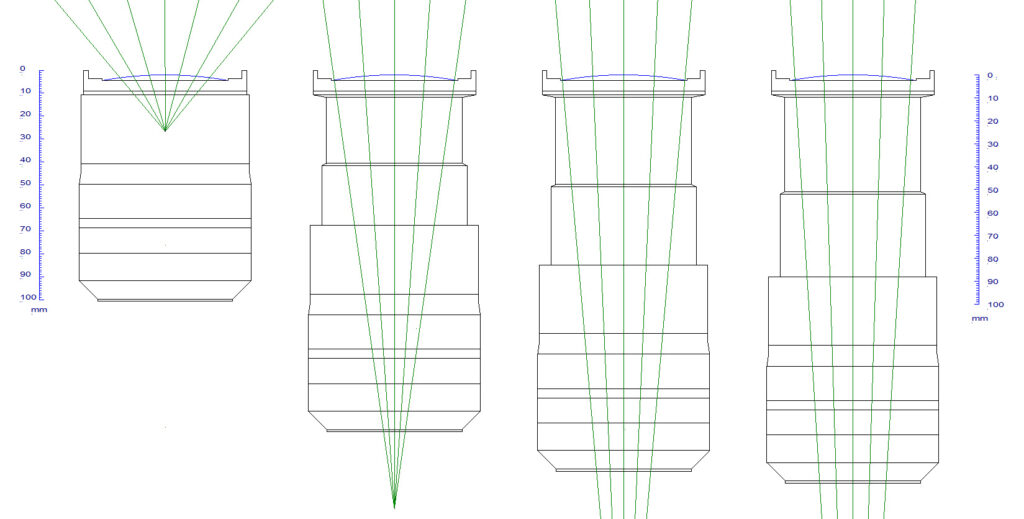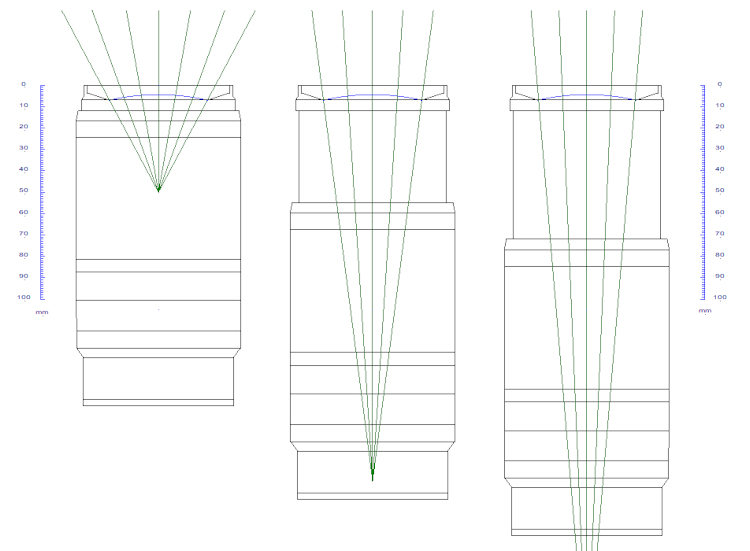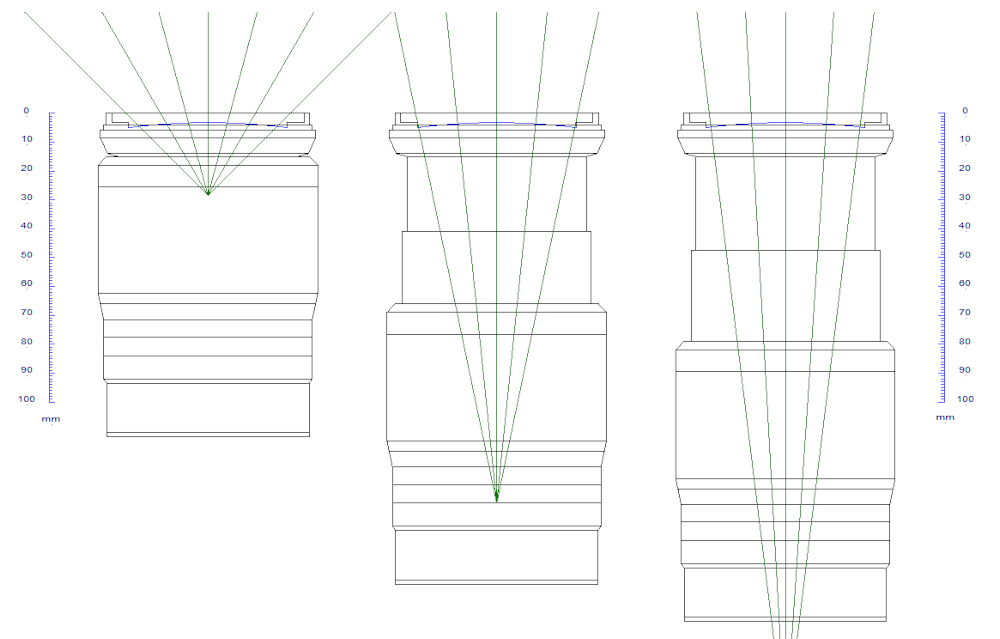Results from determining the location of the No Parallax Point (Nodal Point) of a selection of lenses.
The position of the Nodal Point, and its behavior, clearly depends on the lens design and construction.
The illustrations shown here have been determined using the ‘Laser Pointer’ and/or the ‘Pins & Tape Measure’ methods.
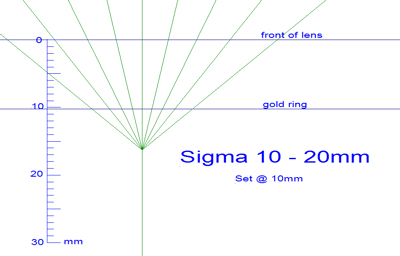 |
The Sigma 10 to 20mm f4-5.6 EX DC HSM Lens zoom lens actually has the Front Nodal Point at a point and this location remains the same irrespective of the distance the lens is focused for. It is the same point whether the lens is focuses at infinity or close focused. |
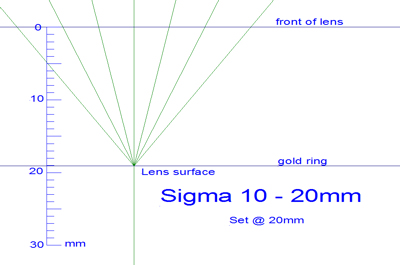 |
The Front Nodal Point on the Sigma 10 to 20mm f4-5.6 EX DC HSM Lens zoom lens moves away from the front of the lens as the focal length is increased by zooming and is some 19mm back from the front of the lens when set at the 20mm focal length. At the 20mm setting the Nodal Point is coincident with the gold ring and remains in the same place as the lens is focused. |
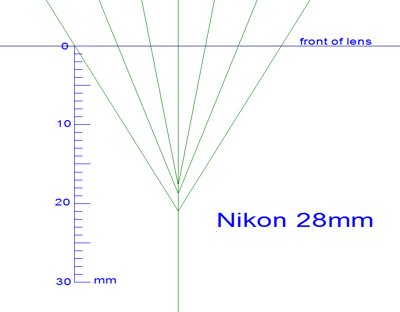 |
The Nikon 28mm f2.8 D AF lens demonstrates how the Front Nodal Point “slides” along the principle ray (lens axis) in some lens designs. As the angle of view increases, the Nodal Point moves back, away from the front of the lens. Here the lens is focused at infinity and the Nodal Point is some 20mm from the front of the lens and shows a spread of some 4mm with the angles of view used. |
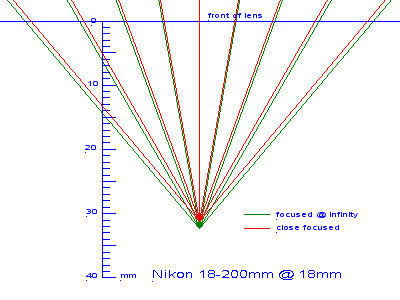 |
The Nikon 18 to 200mm f3.5-5.6 G AF-S VR lens set at 18mm shows a similar consistency to the Sigma 10 to 20mm, with a slight change between focus at infinity and close focused. For use with a Panoramic head for 360° Panoramas, the Nodal Point can be considered as 32mm back from the front rim of the lens. |
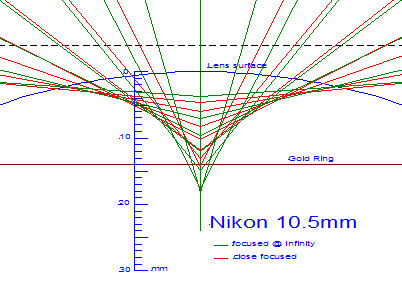 |
The Nikon 10.5mm f2.8 G ED Fisheye shows the reverse effect to the Nikon 28mm lens in that the Front Nodal Point “slides” along the principal ray but moves closer to the front of the lens as the angle of view increases. The Nodal Point for this lens also varies according to the focus and has less of a spread when close focused than when focused at infinity. This a DX lens with a fixed lens hood which needs to be removed (shaved) for use with an FX body. |
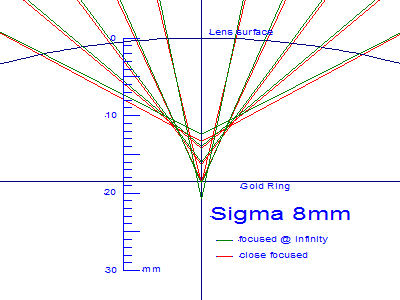 |
The Sigma 8mm f3.5 EX DG Fisheye shows the same characteristics as the Nikon 10.5mm Fisheye lens in that the Front Nodal Point “slides” along the principal ray and moves closer to the front of the lens as the angle of view increases. The Nodal Point for this lens also varies according to the focus and has less of a spread when close focused than when focused at infinity. |
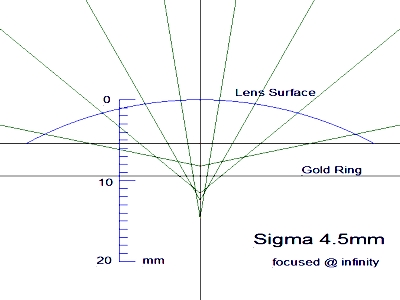 |
The Sigma 4.5mm f2.8 EX DC Fisheye shows the same characteristics as the Sigma 8mm Fisheye lens in that the Front Nodal Point “slides” along the principal ray and moves closer to the front of the lens as the angle of view increases. |
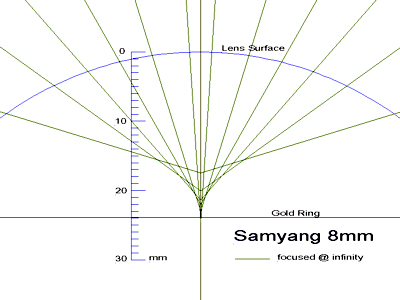 |
The Samyang 8mm f3.5 FISH-EYE CD shows the same pattern as the other fisheye lenses, but with a much tighter range for the entrance pupil, which is due to the different design as described by LensTip.com and Michel Thoby. This design would suggest that this is a more suitable lens for Spherical (360°) Panoramas than the “conventional” fisheye lenses and its considerably lower cost makes it an attractive option. |
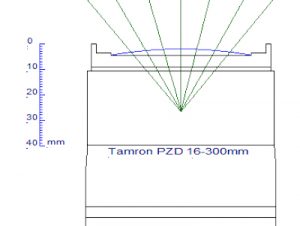 |
The Tamron PZD 16 to 300mm f3.5-6.3, suitable for use with an DX [APS-C] sensor, shows the opposite movement of the NPP (No Parallax Point) to the Fisheye lenses in a similar manner to the Nikon 28 mm f2.8 D AF, when set at 16 mm and focused at infinity. |
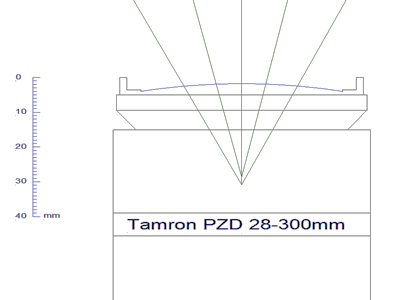 |
The Tamron PZD 28 to 300mm f3.5-6.3, suitable for use with an FX sensor, shows the opposite movement of the NPP (No Parallax Point) to the Fisheye lenses in a similar manner to the Nikon 28 mm f2.8 D AF, when set at 28 mm and focused at infinity. |
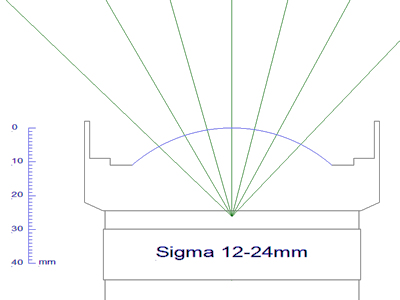 |
The Sigma 12-24mm f/4.5-5.6 DG II HSM, for use with an FX sensor, shows the same characteristics as the Sigma 10 to 20mm f4-5.6 HSM for use with a DX sensor with the NPP (No Parallax Point) some 1.6 mm back from the back of the fixed lens hood, when set at 12 mm and focused at infinity. |
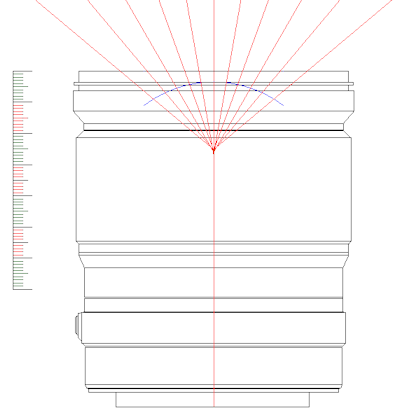 |
Fujinon GF Lens 23mm 1:4 R LM WR The location for the NPP of this lens is 25.5 mm back from the front of the lens or 4 mm back from the front edge of the focusing ring. For the lens fitted with a ND filter the NPP moves towards the front of the lens by 0.5 mm so the NPP will then be 25 mm back from the front of the lens or 3.5 mm back from the front edge of the focusing ring and 29 mm back from the front of the ND filter. |
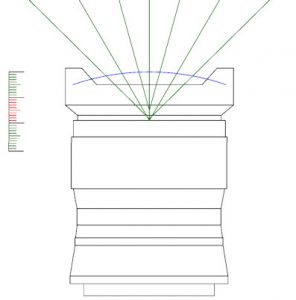 |
The TTArtisan 11mm f2.8 lens is an FX full frame fisheye lens. The lens I measured is for the Nikon Z cameras and has angle of view of approximately 173° across the diagonal and 140° on the long side. The lens not only varies at the rear to fit various cameras as expected, but can differ at the front. e.g. The lens for a Fujifilm GFX does not have the built in lens hood. The NPP is some 18 mm back from the front of the lens or 19.5mm back from the front of the lens hood with the lens focused at infinity. |
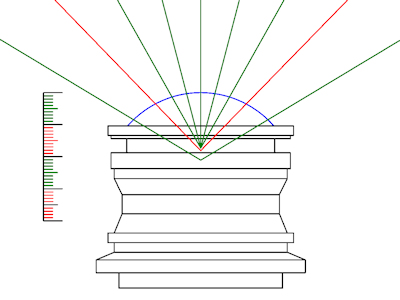 |
The NPP pattern for the Pergear 7.5mm Fisheye is different to that of most fisheye lenses. This is a DX lens with a fixed metal lens hood which needs to be removed (shaved) for use with an FX body. It is a totally manual lens so has no exif data so an FX body does not recognize it as a DX lens and switch to DX mode automatically so uses the FX image format. The NPP for the rays at 45° to the principal ray (4 shots round) is 18 mm back from the front of the lens. |
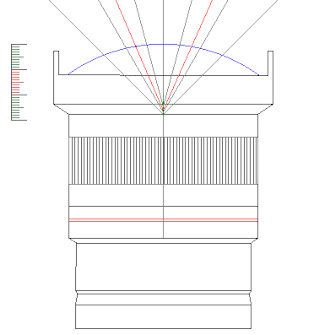 |
The Samyang 14mm f2.8 lens behaves similarly to the TTArtisan and Pergear above in that the NPP slides from the front of the lens to the back as the incident angle increases. The NPP for an incident angles of 22.5° to the principal ray (8 shots round) is at the centre of the bevel at the back of the fixed lens hood which is 26 mm back from the front of the lens. The lens measured is an FX Nikon Z fit. |
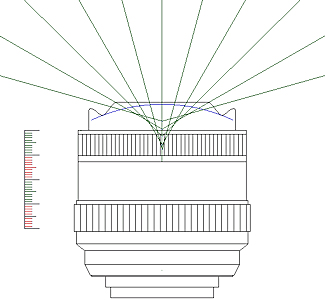 |
The Tokina AF 10-17mm f3.5-4.5 DX shows the same characteristics of other fisheye lenses in that the NPP “slides” along the principal ray moving closer to the front of the lens as the angle of view increases. Conveniently the NPP does not change by more than one millimetre throughout the 10mm to 17mm focal range and the suitable NPP is at the front edge of the ribbed focus ring. |
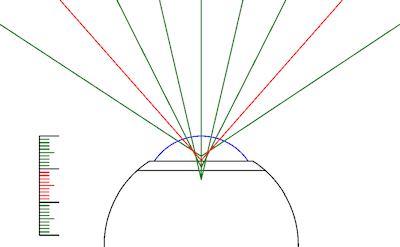 |
The Samsung Gear 360 camera is designed for the two hemispherical images to be ‘joined’ using ActionDirector but experiments with using the camera for measurement revealed that taking four shots round and stitching the four shots for the front lens in PTGui produced a more accurate equirectangular than ‘joining’ the two hemispheres in ActionDirector. The equirectangular created by stitching the four images in PTGui is also some 30% bigger than that produced in ActionDirector. |
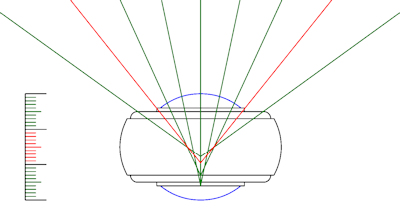 |
Whilst determining the NPP for the two previous lenses I thought it would be interesting to see how the Insta360 ONE X2 behaved given that the geometry is different as the sensor is not perpendicular to the principal ray entering the lens. To stitch four shots round in PTGui rotating the camera round its vertical axis (tripod bush) provides a good result with the equirectangular about the same size as that using Insta360 Studio to ‘join’ the two hemispheres. |
|
I have concentrated in mapping the No Parallax Points (NPP) for Wide Angle and Fisheye Lenses as their location is crucial for 360° Panoramas, especially if the subject is close to the camera. Whilst the NPP for a Wide Angle or Fisheye Lens can be measured with great accuracy this is not the case with a ‘long lens’ because of the narrow FoV and at 300 mm the precision of measurement is some +/- 20 mm and the accuracy range may be even greater. The first lens I measured was a Tamron PZD 16 to 300mm f3.5-6.3, a DX (APS-C) lens, with the following results:
Then a Nikon 24 to 200mm f4-6.3 lens, an FX (full frame) lens, with the following results:
|
|

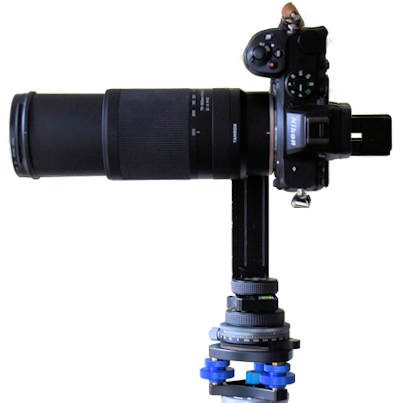 I experimented by photographing a facade approximately 18m from the camera with a hedge in front some 15mm from the camera using a 300mm lens on an FX (full frame) body and the results were great with
I experimented by photographing a facade approximately 18m from the camera with a hedge in front some 15mm from the camera using a 300mm lens on an FX (full frame) body and the results were great with 